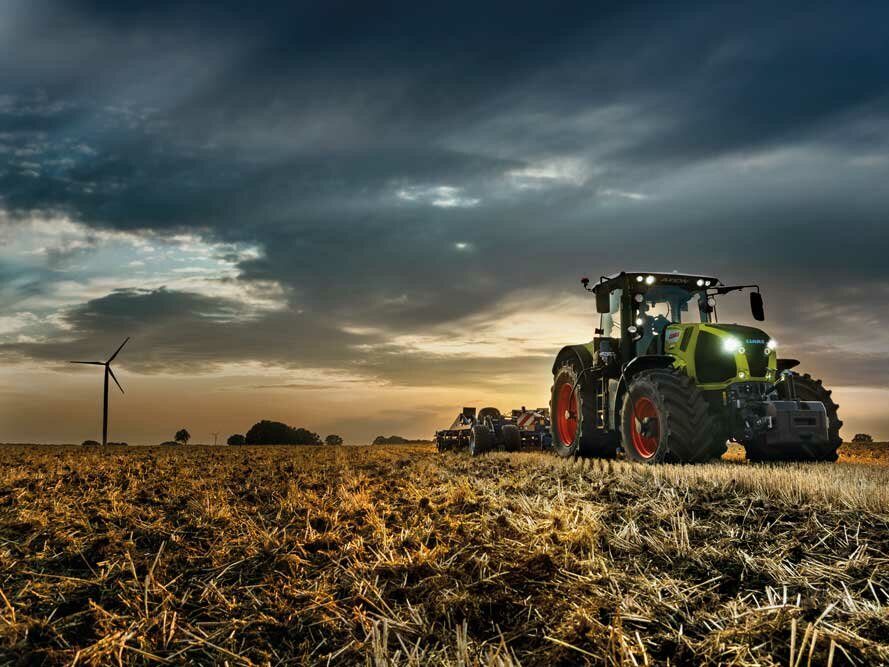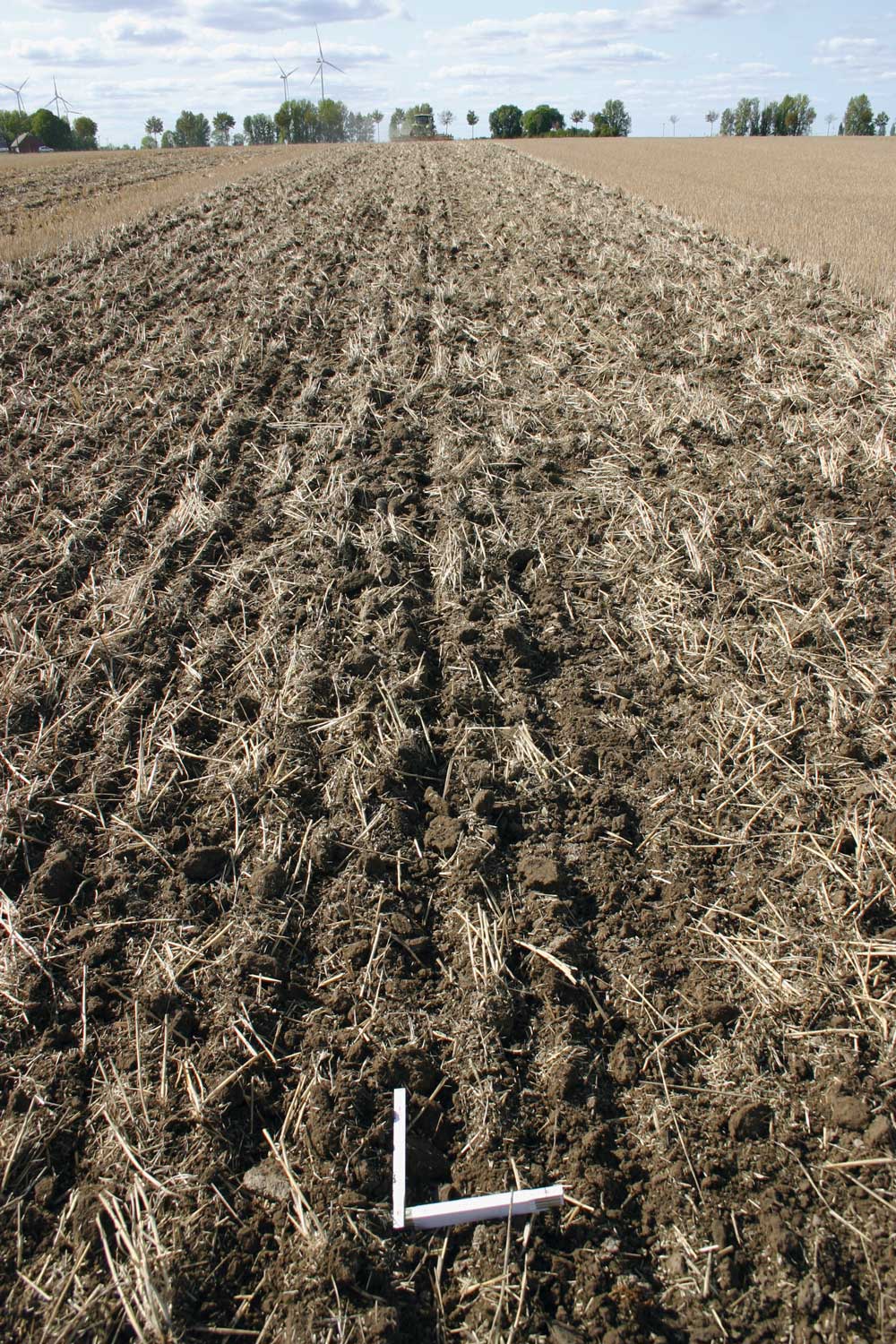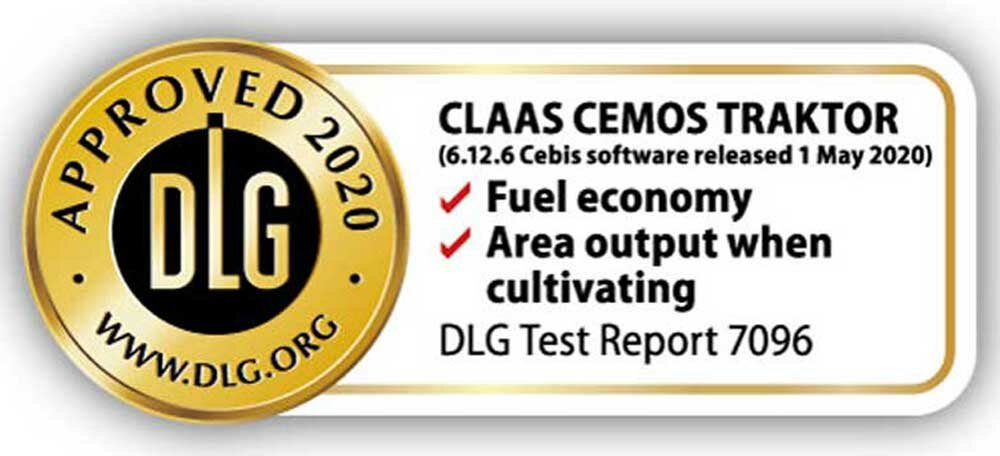Claas CEMOS tractor - Can an assistance system beat experience?
By Georg Horst Schuchmann, DLG Test Center Technology and Farm Inputs
The DLG Test Centre compared: Can an assistance system with its stored measurement data and algorithms adjust a tractor-cultivator combination better than manual operation by the driver with regard to fuel consumption and area output?
Claas CEMOS assistance system versus experienced tractor driver
The "Claas electronic machine optimisation system", CEMOS for short, which has won several awards as an innovation, was introduced by Claas in 2011 for electronic machine optimisation on combine harvesters and supports the driver in driving his machine with the optimum settings. Over the years, however, the idea of assistance has been extended to other types of machines. In the forage harvester Jaguar CEMOS Auto Performance, for example, the assistance system adjusts the power to the current demand by changing the engine characteristics. And after already winning a silver Innovation Award at AGRITECHNICA 2017, the CEMOS assistance system is now also available for all Claas tractors in the Arion 500 to Axion 900 series. In addition to the settings of the tractor, the driver can also optimise the settings of the implement in dialogue with his electronic co-driver here. The CEMOS assistance system is integrated into the "Claas electronic on-board information system" CEBIS, via whose terminal with 12″ touch colour display access to various electronic control units as well as their prioritisation and extended automation functions are possible.
Simple dialogue for setting
At the beginning of the work, the assistance system asks for all necessary basic conditions via the CEBIS operator terminal. These are, of course, the technical data of the cultivator including the desired working depth, but also soil moisture and soil type. But the driver can also specify whether he wants to optimise the tractor-implement combination for high area output or optimum fuel efficiency. Based on these parameters and the stored specifications of the tractor tyres, the system first determines recommendations for any additional ballast that may be required, both for front and rear weights and wheel weights. The driver then informs the system of the actual values, which are then taken into account in the subsequent optimisation dialogue and in the tyre pressure recommendation, even if they deviate from the recommendations. During work, the driver can call up the optimisation dialogue at any time. The system determines the actual state and then guides the driver through various optimisation suggestions according to his specifications. The result - positive or negative - of the changed settings is displayed directly and the driver can thus decide whether to keep the change or return to the previous setting.
Practitioner versus Claas CEMOS assistance system
In the DLG test, deep tillage of 23 cm after stubble fall and shallow tillage without prior measures were carried out on two harvested wheat fields in Saxony-Anhalt. Two preset, semi-mounted cultivators with depth control wheels and a U-profile double roller as trailing roller were used, the settings of which were not changed during the test. The three-bar cultivator for deep tillage had a working width of 4.6 m and was equipped with 17 pointed shares. Shallow cultivation was carried out with a four-bar implement with 25 pointed coulters and a working width of 7 m. The cultivator was equipped with two Claas tractors. Two Claas Axion 870 tractors were available as tractors, the only difference being that one tractor had wheel weights of 800 kg. This meant that - if necessary - this type of ballasting could be used without losing time for assembly. The ten test drivers had wide experience with tillage, were familiar with the tractor used in the test, but had not previously used the tested Claas CEMOS assistance system themselves. They carried out the soil cultivation in several test series always comparing a manually selected setting and with the support of the Claas CEMOS assistance system. With the specially selected settings, the drivers could vary the ballasting, tyre pressure, engine pressure value, driving speed, position of the lower links and transmission acceleration value, as well as decide on the use of all-wheel drive and differential lock. In addition to recording fuel consumption and area performance, the quality of work was also evaluated, i.e. straw bedding, surface levelling, crumbling effect and straw incorporation.
The Claas CEMOS assistance system is ahead of the game
In terms of specific fuel consumption, savings of up to 16.8 % were achieved in deep tillage through the recommendations of the Claas CEMOS Assist system, which corresponded to a saving of 2.6 l/ha in the trial. On average across all 10 test drivers and all working and setting conditions, a fuel saving of 6 % was achieved. As expected, the effect was lower with shallow tillage. Surprisingly, even in manual operation, one test driver managed to anticipate the recommendations issued later by the assistance system. In eight out of ten cases, the assistance system recommended an increase in driving speed despite optimisation for fuel efficiency, which also led to an increase in area output. Averaged over all 10 test drivers, the increase compared to unassisted driving without the assistance system was 5.6 %. When looking at the individual drivers involved, a maximum value of 16.3 % was achieved here, which was brought about by an increase in driving speed from 6.8 km/h to 7.9 km/h recommended by the assistance system. Overall, no influence of the optimisation on the specific fuel consumption or the area performance and the grading of the work quality could be determined.
Conclusion
In a comparison between the recommendations of the Claas CEMOS assistance system and a manual setting of a tractor-cultivator combination, the specific fuel consumption could be reduced and the area output significantly increased without affecting the quality of work. Further details can be found in test report 7096. It is available free of charge on the DLG website at www.DLG-Test.com.






